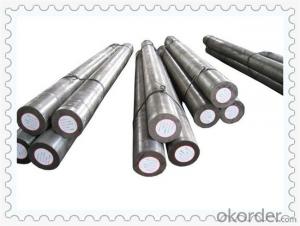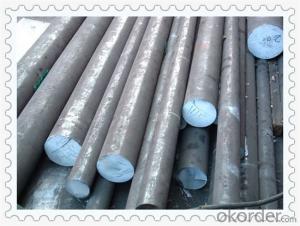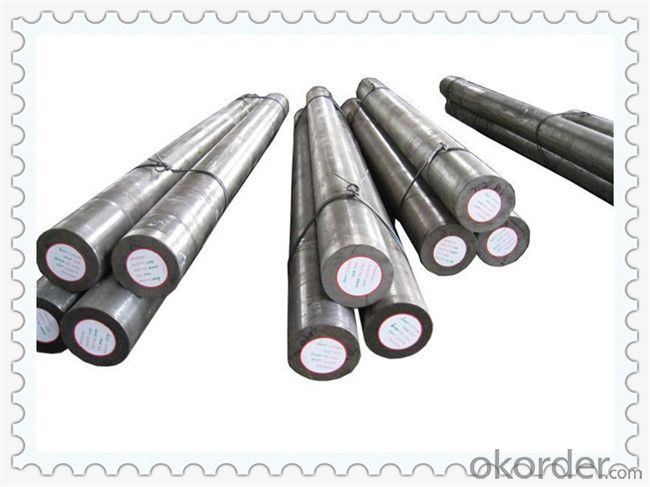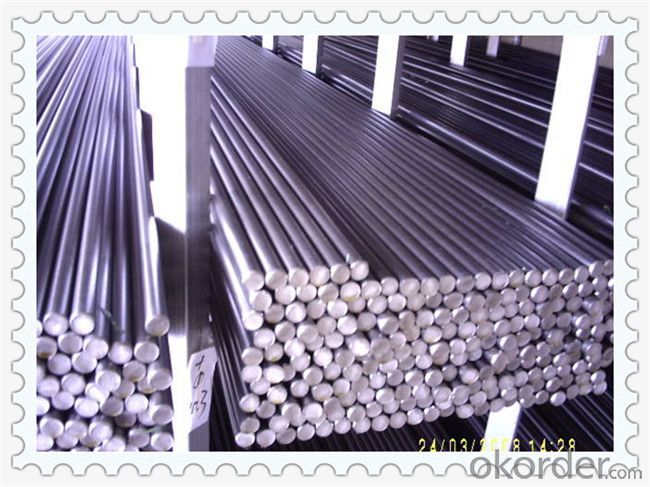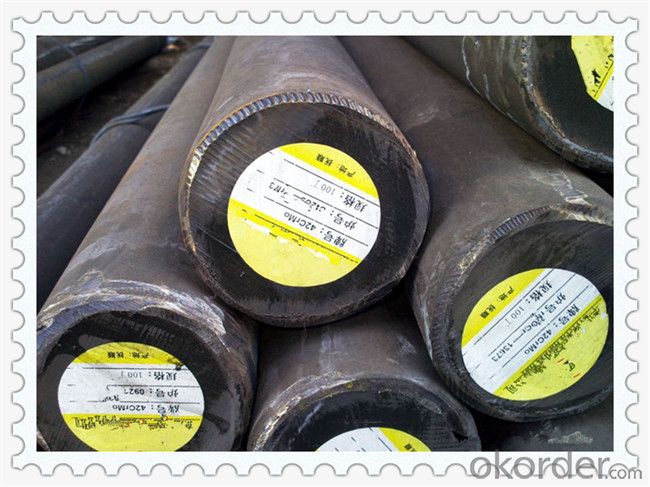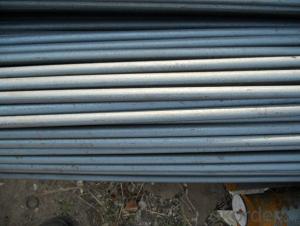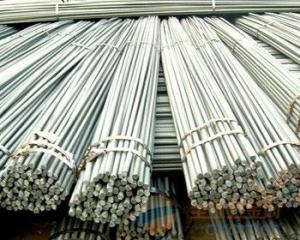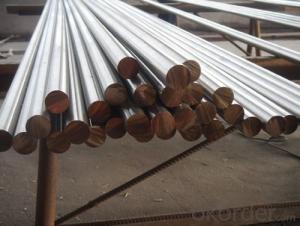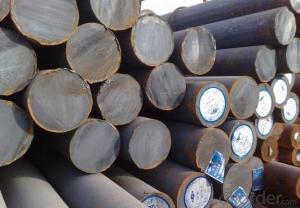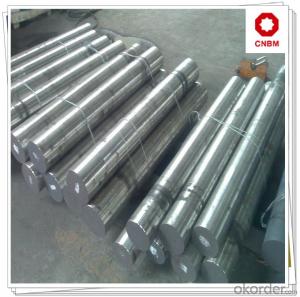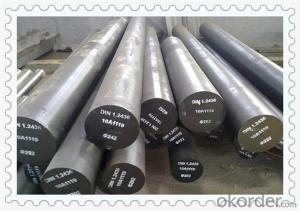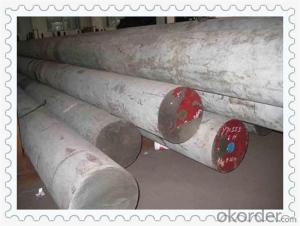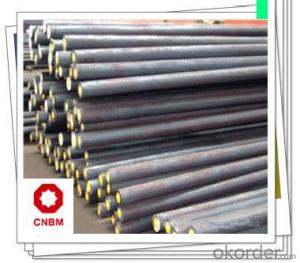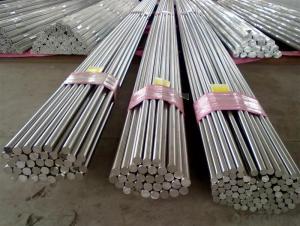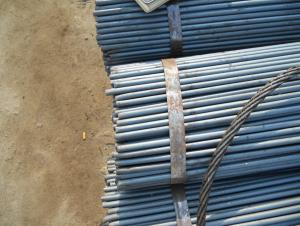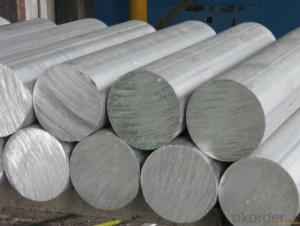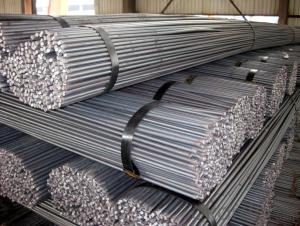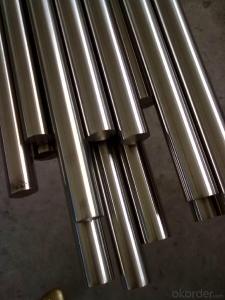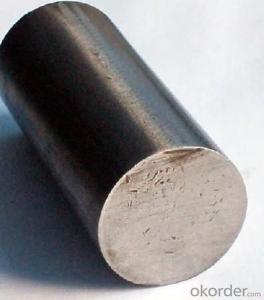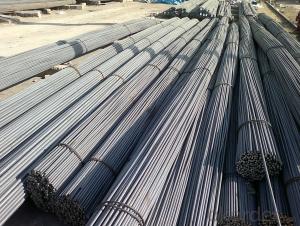1040 Carbon Structural Steel Round Bars
- Loading Port:
- China main port
- Payment Terms:
- TT OR LC
- Min Order Qty:
- 30 m.t.
- Supply Capability:
- 10000 m.t./month
OKorder Service Pledge
OKorder Financial Service
You Might Also Like
1040 Carbon Structural Steel Round Bars
Products Details
Mild steel is sometimes referred to as carbon steel or plain steel. Typically, it is stiff and strong. Carbon steels do rust easily, but they can be easily painted or primed. They are cheap so they are the normal choice for most fabrications. Mild Steel can be easily cut or drilled to meet your requests.
Mild Steel Round Bar is used for making security grills, screens, Construction and Machine Manufacture.
Material: Q195; Q235; A36; SS400; ST37; SAE1006/1008; S275JR; 20#; 45#; Q345,S355JR; 16Mn; ST52;
42CrMo; 40CrNiMo etc.
1. Sizes Information
| Sizes detalis | diameter | 16-320mm |
| length | 3-12m(canbe customerized) | |
| Sizes tolerance | length | +/-100mm |
| Straightness | 3mm/m |
2. Grade Comparison
| GB | ASTM | JIS | DIN | BS | NF |
| 40# | 1040 | S40C | C40 | IC40080M40 | C40 |
3. Chemical Composition
| C | Si | Mn | Cr(≤) | Ni(≤) | Cu(≤) |
| 0.37-0.44 | 0.17-0.37 | 0.5-0.8 | 0.25 | 0.3 | 0.25 |
4. Mechanical Properties
| Tensile Strength(Mpa) | Yield Strength(Mpa) | Elongation | Shrinkage | Akv(J) | ||||
| 570 | 335 | 19 | 45 | 47 | ||||
Products Show
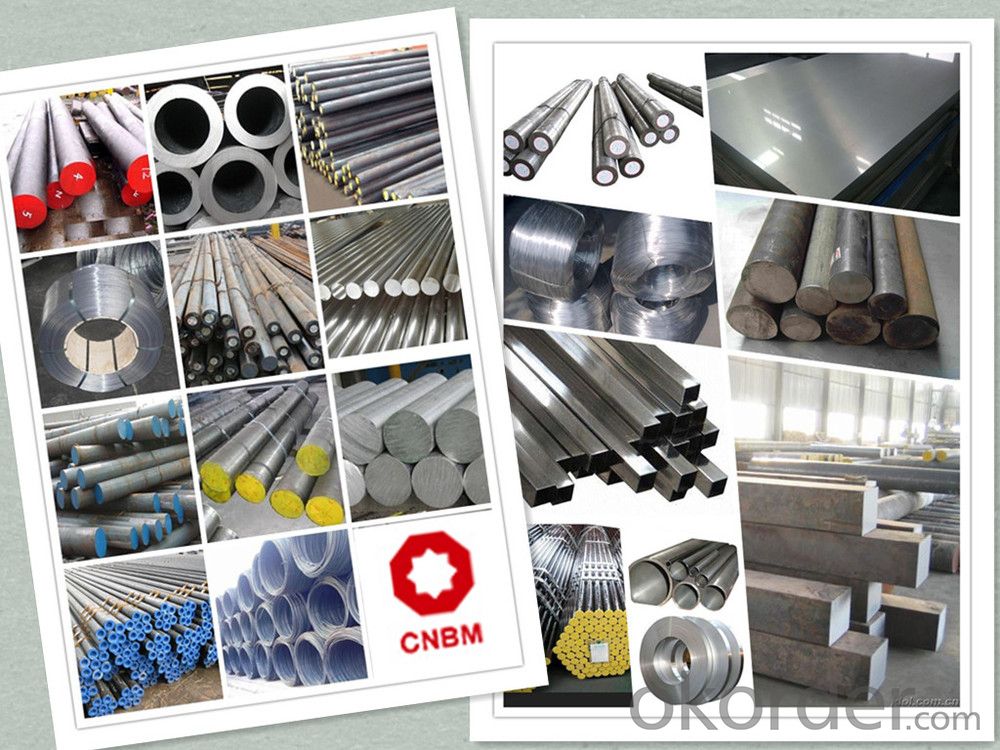
Product Overviews
| Product Name | Typical Grades | Diameter(mm) | Standard adopted |
| Carbon Steel | 20 (1020/S20C/C22) | Ø16-Ø300 |
GB/SAE/JIS/DIN
|
| 40 (1040/S40C/C40) | |||
| 45 (1045/S45C/C45) | |||
| Bearing Steel | GCr9 (51100/SUJ1) | Ø12-Ø250 | |
| GCr15 (52100/SUJ2/100Gr6) | |||
| GCr9SiMn (A485-Gr.1/SUJ3) | |||
Cr-Mo Steel | 20Cr (5120/SCr420H/20Cr4) | Ø12-Ø250 | |
| 40Cr (5140/SCr440/41Cr4) | |||
| 42CrMo(4140/SCM440/42CrMo4) | |||
| Gear Steel | 20CrNiMo | Ø16-Ø600 | |
| 20CrMn(5115/SMnC420/20MnCr5) | |||
| 20CrNiMo(8620/SNCM220/20CrMiMo2) |
Application
| Carbon Steel | Mold bottom, Plastic mold, Construction machinery parts Automobile parts, Security grills, Screens, Construction |
| Bearing Steel | Aerospace, Navigation, Nuclear energy, Chemical industry Electronic information, Petrochemical, Instrument and meter Transportation |
| Cr-Mo Steel | Mechanism & Fasteners gear, Stressed components for vehicles Engines and machines, Parts of larger cross-section |
| Gear Steel | All kinds of gears, Statically and dynamically stressed component for vehicles Engines and machine, Larger cross-section parts, Crankshafts |
Work Shop
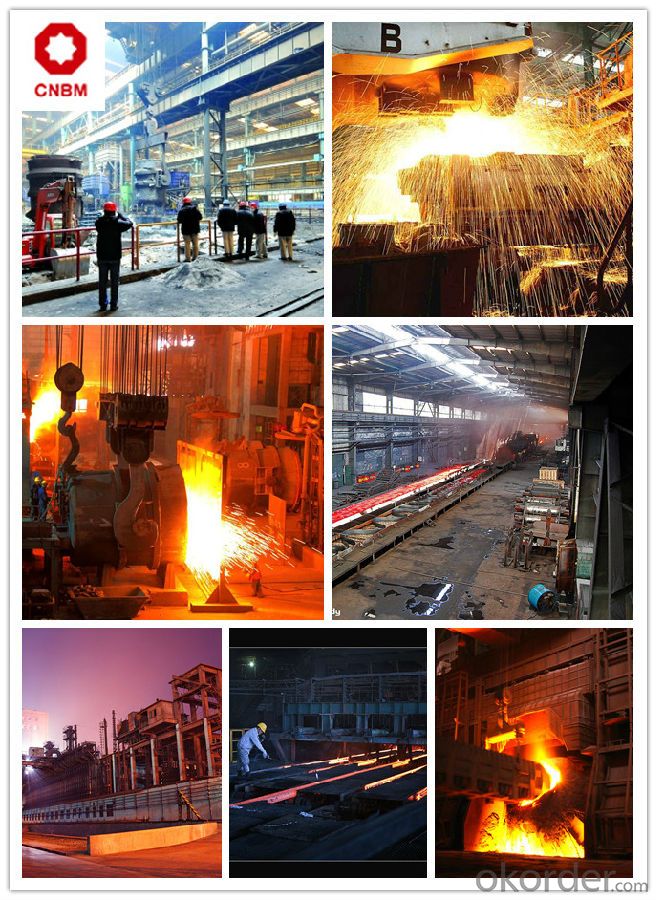
Company Information
CNBM International Corporation is the most important trading platform of CNBM group.
Whith its advantages, CNBM International are mainly concentrate on Cement, Glass, Iron and Steel, Ceramics industries and devotes herself for supplying high qulity series of refractories as well as technical consultancies and logistics solutions.

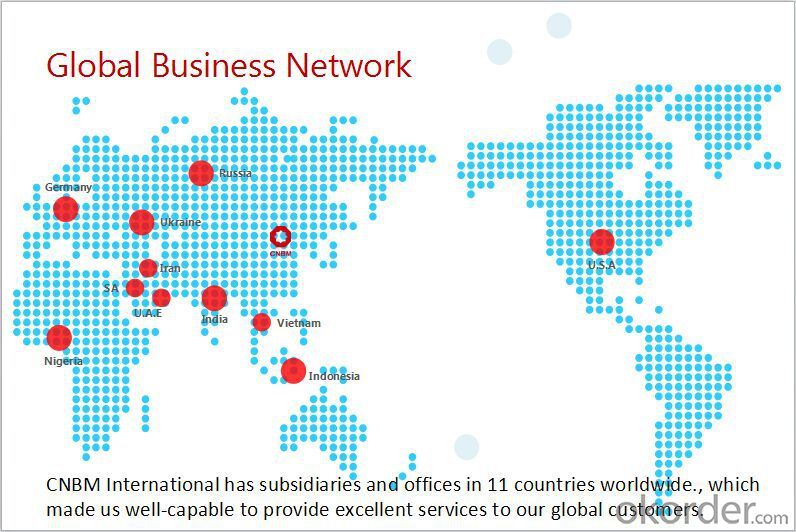
FAQ
1, Your advantages?
professional products inquiry, products knowledge train (for agents), smooth goods delivery, excellent customer solution proposale
2, Test & Certificate?
SGS test is available, customer inspection before shipping is welcome, third party inspection is no problem
3, Factory or Trading Company?
CNBM is a trading company but we have so many protocol factories and CNBM works as a trading department of these factories. Also CNBM is the holding company of many factories.
4, Payment Terms?
30% TT as deposit and 70% before delivery.
Irrevocable L/C at sight.
5, Trading Terms?
EXW, FOB, CIF, FFR, CNF
6, After-sale Service?
CNBM provides the services and support you need for every step of our cooperation. We're the business partner you can trust.
For any problem, please kindly contact us at any your convenient time.
We'll reply you in our first priority within 24 hours.
Packaging & Delivery
1, Packaging: seaworthy package or as required
2, Delivery: 35-45 days or based on quantity
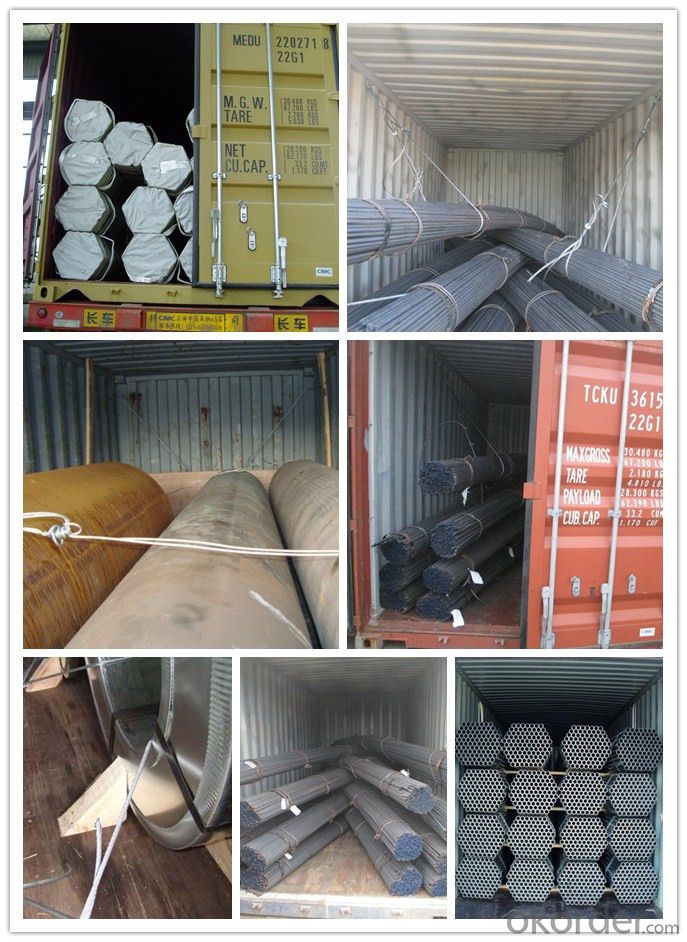
- Q: What are the environmental considerations of steel round bars?
- Steel round bars have several environmental considerations. Firstly, the production of steel requires a significant amount of energy, which often comes from non-renewable sources, leading to greenhouse gas emissions and contributing to climate change. Additionally, the extraction and processing of raw materials for steel production, such as iron ore and coal, can have detrimental effects on local ecosystems and habitats. Furthermore, the transportation of steel round bars can result in carbon emissions if not done efficiently. However, steel is a highly recyclable material, and the use of recycled steel in the production of round bars can help reduce environmental impact. Additionally, the durability and strength of steel make it a long-lasting material, leading to less waste in the long run.
- Q: Can steel round bars be forged?
- Yes, steel round bars can be forged.
- Q: Can steel round bars be used in the production of industrial machinery?
- Yes, steel round bars can be used in the production of industrial machinery. Steel round bars are commonly used in the manufacturing of various components and parts for industrial machinery due to their strength, durability, and versatility. These bars can be used to create shafts, gears, rollers, and other critical components that are essential for the proper functioning of industrial machinery. The high tensile strength of steel round bars allows them to withstand heavy loads and resist deformation, making them ideal for use in industrial applications. Additionally, steel round bars can be easily machined, welded, and formed into different shapes and sizes, making them highly suitable for customization according to specific machinery requirements.
- Q: Can steel round bars be threaded?
- Yes, steel round bars can be threaded. Threading is a common process used to create a helical ridge on the surface of a round bar, allowing it to be securely fastened to other components or fittings.
- Q: Are steel round bars resistant to chemicals?
- The resistance of steel round bars to chemicals can vary depending on the specific steel type and the chemicals involved. Stainless steel round bars are well-known for their exceptional resistance to a wide range of chemicals, including acids, alkalis, and various organic compounds. This is because stainless steel contains high levels of chromium, which creates a protective oxide layer on the surface, preventing corrosion and chemical attacks. However, not all steel round bars possess the same level of chemical resistance. Carbon steel round bars, for example, are more prone to corrosion and chemical attacks compared to stainless steel. Corrosive chemicals, especially in highly corrosive environments, can affect carbon steel and cause damage. In such cases, it may be necessary to use additional protective measures, such as coatings or treatments, to enhance the chemical resistance. To summarize, stainless steel round bars provide excellent chemical resistance, whereas carbon steel round bars may require extra precautions to prevent chemical corrosion. When assessing the chemical resistance of steel round bars, it is crucial to consider the specific steel type, the type of chemical, and the environmental conditions.
- Q: What are the different types of steel round bar alloys for improved toughness and wear resistance?
- Improved toughness and wear resistance are key characteristics in several steel round bar alloys. These alloys are essential in applications where strength and durability are necessary. Some of the commonly utilized alloys are: 1. Alloy Steel: By incorporating elements like chromium, nickel, molybdenum, or vanadium, alloy steel round bars are fabricated to enhance their mechanical properties. These alloys provide increased strength, toughness, and wear resistance. 2. Stainless Steel: With a minimum chromium content of 10.5%, stainless steel round bars are corrosion-resistant alloys. They exhibit excellent toughness, high strength, and superior wear resistance. Industries such as aerospace, automotive, and construction widely rely on stainless steel round bars. 3. Tool Steel: Tool steel round bars are tailor-made for applications that demand high wear resistance and toughness. These alloys are commonly employed in the manufacturing of cutting tools, dies, and molds. By incorporating elements like tungsten, vanadium, or molybdenum, tool steel alloys improve hardness and wear resistance. 4. Carbon Steel: Renowned for their high strength and toughness, carbon steel round bars find extensive use. These alloys contain varying amounts of carbon and are recognized for their excellent wear resistance. Industries including manufacturing, construction, and automotive utilize carbon steel round bars. 5. Bearing Steel: Bearing steel round bars are specifically engineered to withstand high stress and offer excellent wear resistance. These alloys are commonly employed in the production of ball bearings, roller bearings, and other high-performance bearing components. Bearing steel alloys typically include elements like chromium, silicon, and manganese to enhance mechanical properties. To conclude, a range of steel round bar alloys is available, each offering improved toughness and wear resistance. The selection of the most suitable alloy depends on specific application requirements and desired mechanical properties.
- Q: Q235 and mechanical properties of hot rolled steel cold drawn steel have what difference, Q235 hot rolled steel with 12 combined shearing machine has a number of very hard, the damage of the blades, why
- Secondly, have a great relationship with the mechanical properties of heat treatment of steel, quenching hardness increased, annealing hardness decreases, the same kind of material of steel under different heat treatment, the hardness difference is very big, you said the hot bar is excellent, there may have been a quenching in the production process
- Q: How do you calculate the moment of inertia of a steel round bar?
- To calculate the moment of inertia of a steel round bar, you need to know its mass and the radius of gyration. The moment of inertia can be determined using the formula I = (1/4) * π * r^4, where I represents the moment of inertia and r is the radius of the round bar.
- Q: What is the maximum sulfur content allowed for steel round bars?
- The allowed maximum sulfur content for steel round bars can vary depending on the specific grade and specification. Generally, the control of sulfur content in steel is essential to ensure the material's quality and good machinability. For most commercial grades of steel round bars, the maximum sulfur content is typically restricted to approximately 0.05% to 0.08%. Nevertheless, it is crucial to acknowledge that specific specialized grades or applications may possess distinct limits or requirements. It is advisable to refer to the appropriate standards or specifications for the specific grade of steel round bars to ascertain the maximum allowable sulfur content.
- Q: What are the different types of steel round bar coatings used in the automotive industry?
- There are several different types of steel round bar coatings used in the automotive industry, including galvanized coatings, epoxy coatings, and powder coatings. These coatings are applied to the steel bars to provide protection against corrosion, enhance durability, and improve the overall appearance of the automotive components.
Send your message to us
1040 Carbon Structural Steel Round Bars
- Loading Port:
- China main port
- Payment Terms:
- TT OR LC
- Min Order Qty:
- 30 m.t.
- Supply Capability:
- 10000 m.t./month
OKorder Service Pledge
OKorder Financial Service
Similar products
Hot products
Hot Searches
Related keywords
